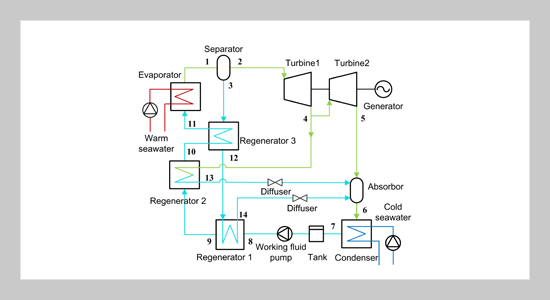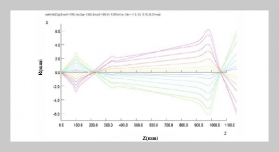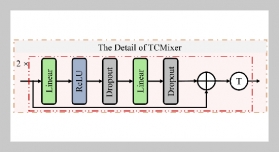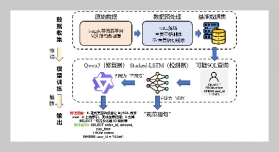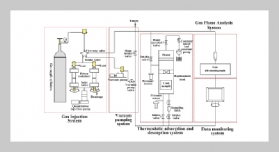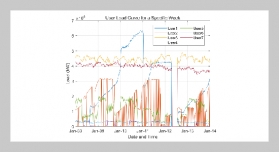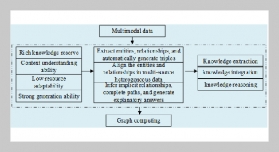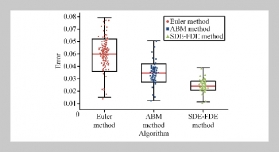REFERENCES
- [1] Zhang, W., Li, Y., Wu, X, and Guo, S., “Review of the applied mechanical problems in ocean thermal energy conversion,” Renewable, Sustainable. Energy. Rev, Vol. 93, pp. 231–244 (2018). doi:10.1016/j.rser.2018.05.048
- [2] Wang, S., Yuan, P., Li, D., and Jiao, Y., “An overview of ocean renewable energy in China,” Renewable, Sustainable. Energy. Rev, Vol. 15, pp. 91–111 (2011). doi:10.1016/j.rser.2010.09.040
- [3] Ng, K.C., and Shahzad, M.W., “Sustainable desalination using ocean thermocline energy,” Renewable. Sustainable. Energy. Rev, Vol. 82, pp. 240–246 (2018). doi:10.1016/j.rser.2017.08.087
- [4] Khan, N., Kalair, A., Abas, N., and Haider, A., “Review of ocean tidal, wave and thermal energy technologies,” Renewable. Sustainable. Energy. Rev, Vol. 72, pp. 590–604 (2017). doi:10.1016/j.rser.2017.01.079
- [5] Goto, S., Motoshima, Y., Sugi, T., Yasunaga, T., Ikegami, Y., and Nakamura, M., “Construction of simulation model for OTEC plant using Uehara cycle,” Electrical. Engineering. In. Japan, Vol. 176, pp. 1–13 (2011). doi:10.1002/eej.21138
- [6] Fujita, R., Markham, A.C., Diaz Diaz, J.E., Rosa Martinez Garcia, J., Scarborough, C., Greenfield, P., Black, P., and Aguilera, S.E., “Revisiting ocean thermal energy conversion,” Marine. Policy, Vol. 36, pp. 463–465 (2012). doi:10.1016/j.marpol.2011.05.008
- [7] Liu, W., Ma, C., Chen, F., Liu, L., Ge, Y., Peng, J., Wu, H., and Wang, Q., “Exploitation and technical progress of marine renewable energy,” Adv. Mar. Sci, Vol. 36, pp. 1–18 (2018). doi:3969/j.issn.1671-6647.2018.01.001
- [8] Su, J., Zeng, H., Xiao, G., Wang, J., and Jiang, J., “Research status and prospect of ocean thermal energy conversion technology,” China. Offshore. Oil. Gas, Vol. 24, pp. 84–98 (2012). doi:10.3969/j.issn.1673-1506.2012.04.018
- [9] Kobayashi, H., Jitsuhara, S., and Uehara, H., “The present status and features of OTEC and recent aspects of thermal energy conversion technologies,” in 24th Meeting of the UJNR Marine Facilities Panel, Honolulu, HI, USA, (2004).
- [10] Heydt, G.T., “An assessment of ocean thermal energy conversion as an advanced electric generation methodology,” Proc. IEEE 1993, Vol. 81, No. 3, pp. 409–418 (1993). doi: 10.1109/5.241487
- [11] Vega, L.A., “Ocean thermal energy conversion primer,” Mar. Technol. Soc. J, Vol. 36, pp. 25–35 (2002). doi:10.4031/002533202787908626
- [12] Bharathan, D., Kreith, F., Schlepp, D., et al. “Heat and Mass Transfer in Open-Cycle OTEC Systems,” Heat Transfer Engineering, Vol. 5, No. 1-2, pp. 17-30 (1984). doi: 10.1080/01457638408962766
- [13] Zangrando, F., Bharathan, D., Link, H., and Panchal, C. B., “Seawater test results of open-cycle ocean thermal energy conversion (OC-OTEC) components.” Heat Transfer Engineering, Vol. 11, No. 4, pp. 44-53 (1994). doi: 10.1080/01457639008939740
- [14] Kim, A. S., Kim, H. J., Lee, H. S., et al. “Dual-use open cycle ocean thermal energy conversion (OC-OTEC) using multiple condensers for adjustable power generation and seawater desalination.” Renewable Energy, Vol. 85, pp. 344-358 (2016). doi: 10.1016/j.renene.2015.06.014
- [15] Amano, M., Tanaka, T., “Open-cycle OTEC systems with freshwater product: Effects of noncondensable gases on performance of condenser.” Electrical Engineering in Japan, Vol. 154, No. 1, pp. 29-35 (2006). doi: 10.1002/eej.20179
- [16] Park, S. S., Kim, N. J., “Study on OTEC for the Production of Electric Power and Desalinated Water.” Journal of the Korean Solar Energy Society, Vol. 30, No. 3, pp. 124-130 (2010).
- [17] Rabas, T., Panchal, C., Genens. L., “Conceptual Design Analysis for Hybrid-Cycle OTEC Plants for Co-Production of Electric Power and Desalinated Water.” American Society of Civil Engineers, International Conference on Ocean Energy Recovery, Honolulu, HI, 28-30 Nov. (1989).
- [18] Uehara, H., Miyara, A., Ikegami, Y., Nakaoka, T., “Performance analysis of an OTEC plant and a desalination plant using an integrated hybrid cycle.” J. Sol. Energy Eng., Vol. 118, No. 2, pp. 115–22 (1996). doi: 10.1115/1.2847976
- [19] Panchal, C., Bell, K., “Simultaneous production of desalinated water and power using a hybrid-cycle OTEC plant.” J. Sol. Energy Eng., Vol. 109, No. 2, pp. 156–60 (1987). doi: 10.1115/1.3268193
- [20] Yuan, H., Zhou, P.L., Mei, N., “Performance analysis of a solar-assisted OTEC cycle for power generation and fishery cold storage refrigeration.” Appl. Therm. Eng.,Vol. 90, pp. 809–19 (2015). doi: 10.1016/j.applthermaleng.2015.07.072
- [21] Sun, F., Zhou, W., Nakagami, K., and Su, X., “Energy-economic analysis and configuration design of the kalina solar-otec system,” Int. J. Comput. Electr. Eng, Vol. 5, pp. 187-191 (2013). doi:10.7763/IJCEE.2013.V5.692.
- [22] Sun, F., Zhou, W., Ikegami, Y., Nakagami, K., and Su, X., “Energy–exergy analysis and optimization of the solar-boosted Kalina cycle system 11 (KCS-11),” Renewable Energy, Vol. 66, pp. 268–279 (2014). doi:10.1016/j.renene.2013.12.015
- [23] Yamada, N., Hoshi, A., and Ikegami, Y., “Performance simulation of solar-boosted ocean thermal energy conversion plant,” Renewable Energy, Vol. 34, pp. 1752–1758 (2009). doi:10.1016/j.renene.2008.12.028
- [24] Yang, M. H., Yeh, R. H., “Analysis of optimization in an OTEC plant using organic Rankine cycle.” Renewable Energy, Vol. 68, pp. 25-34 (2014). doi: 10.1016/j.renene.2014.01.029
- [25] Liu, W. M., Xu, X. J., Chen, F. Y., Liu, Y. J., Li, S. Z., Liu, L., Chen, Y., “A review of research on the closed thermodynamic cycles of ocean thermal energy conversion.” Renewable and Sustainable Energy Reviews, Vol. 119, pp. 1-11 (2020). doi: 10.1016/j.rser.2019.109581
- [26] Faizal, M., and Ahmed, M.R., “Experimental studies on a closed cycle demonstration OTEC plant working on small temperature difference,” Renewable Energy, Vol. 51, pp. 234–240 (2013). doi:10.1016/j.renene.2012.09.041
- [27] Kusuda, E., Morisaki, T., and Ikegami, Y., “Performance test of double-stage Rankine cycle experimental plant for OTEC,” Procedia Eng, Vol. 105, pp. 713–718 (2015). doi:10.1016/j.proeng.2015.05.061
- [28] Yang, M. H., and Yeh, R. H., “Analysis of optimization in an OTEC plant using organic Rankine cycle,” Renewable Energy, Vol. 68, pp. 25–34 (2014). doi:10.1016/j.renene.2014.01.029
- [29] Uehara, H., Ikegami, Y., and Nishida, T., “Performance analysis of OTEC using new cycle with absorption and extraction process,” Proc. of Oceanology Int.’ 94, 6, (1994).
- [30] Uehara, H., Ikegami, Y., and Nishida, T., “Performance analysis of OTEC system using a cycle with absorption and extraction processes,” Trans. Jpn. Soc. Mech. Eng., B, Vol. 64, pp. 2750–2755 (1998). doi:10.1299/kikaib.64.2750
- [31] Uehara, H., “The experimental research on ocean thermal energy conversion using the Uehara cycle,” Proc. of Int. OTEC/DOWA Conference, Japan, (1999).
- [32] Kalina, A.I., “Combined-cycle system with novel bottoming cycle,” J. Eng. Gas Turbines Power, Vol. 106, pp. 737-742 (1984). doi:10.1115/1.3239632
- [33] Kim, N.J., Ng, K.C., and Chun, W., “Using the condenser effluent from a nuclear power plant for ocean thermal energy conversion(OTEC),” Int. Commun. Heat Mass Transfer, Vol. 36, pp. 1008–1013 (2009). doi:10.1016/j.icheatmasstransfer.2009.08.001
- [34] Yuan, H., Mei, N., Hu, S., Wang, L., and Yang, S., “Experimental investigation on an ammonia-water based ocean thermal energy conversion system,” Appl. Therm. Eng, Vol. 61, pp. 327–333 (2013). doi:10.1016/j.applthermaleng.2013.07.050
- [35] Yoon, J.-I., Son, C.-H., Baek, S.-M., Ye, B.H., Kim, H.-J., and Lee, H.-S, “Performance characteristics of a high-efficiency R717 OTEC power cycle,” Appl. Therm. Eng, Vol. 72, pp. 304–308 (2014). doi:10.1016/j.applthermaleng.2014.05.103
- [36] Yoon, J.-I., Son, C.-H., Seol, S., Kim, H.-U., Ha, S.-J., Jung, S.-H., Kim, H.-J., and Lee, H.-S., “Performance analysis of OTEC power cycle with a liquid–vapor ejector using R32/R152a,” Heat. Mass. Transfer, Vol. 51, pp. 1597–1605 (2015). doi:10.1007/s00231-015-1526-2
- [37] Upshaw, C.R., Webber, M. E., “Integrated Thermal-Fluids System Modeling of an Ocean Thermal Energy Conversion Power Plant for Analysis and Optimization.” ASME 2011 5th International Conference on Energy Sustainability, Parts A, B, and C, Aug. 7-10, 2011, Washington, DC, USA. doi: 10.1115/es2011-54595
- [38] Yilmaz, F., Ozturk, M., and Selbas, R., “Thermodynamic performance assessment of ocean thermal energy conversion based hydrogen production and liquefaction process.” International journal of hydrogen energy, Vol. 43, No. 23, pp. 10626-10636 (2018). doi: 10.1016/j.ijhydene.2018.02.021
- [39] Mohd Idrus, N.H., Musa, M.N., Yahya, W.J., Ithnin, A.M., “Geo-Ocean Thermal Energy Conversion (GeOTEC) power cycle/plant.” Renewable Energy, Vol. 111, pp. 372-380 (2017). doi: 10.1016/j.renene.2017.03.086
- [40] Arcuri, N., Bruno, R., Bevilacqua, P., “LNG as cold heat source in OTEC systems.” Ocean Engineering, Vol. 104, pp. 349-358 (2015). doi: 10.1016/j.oceaneng.2015.05.030
- [41] Park, S. S., Kim, W. J., Kim, Y. H., Kim, J. D., and Kim, N. J., “Regenerative otec systems using condenser effluents discharged from three nuclear power plants in south korea.” International Journal of Energy Research, Vol. 39, No. 3, pp. 397-405 (2014). doi: 10.1002/er.3251
- [42] Azhar, M. S., Rizvi, G., and Dincer, I., “Integration of renewable energy based multigeneration system with desalination.” Desalination, Vol. 404, pp. 72-78 (2017). doi: 10.1016/j.desal.2016.09.034
- [43] Chen, F., Liu, L., Peng, J., Ge, Y., Wu, H., and Liu, W., “Theoretical and experimental research on the thermal performance of ocean thermal energy conversion system using the rankine cycle mode,” Energy, Vol. 183, pp. 497–503 (2019). doi:10.1016/j.energy.2019.04.008
- [44] NIST, NIST Reference Fluid Thermodynamic and Transport Properties–REFPROP, Version 9.0, NIST, 2009.
- [45] Incropera, F., Dewit, D., Fundamentals of heat and mass transfer. New York: John Wiley and Sons, 2002.
- [46] Gungor, K., Winterton, R., “Simplified general correlation for saturated flow boiling and comparisons of correlation with data.” Chemical Engineering Research and Design, Vol. 65, No. 2, pp. 148-156 (1987).
- [47] Feng, Y., Zhang, Y., Li, B., Yang, J., and Shi, Y., “Sensitivity analysis and thermoeconomic comparison of ORCs (organic Rankine cycles) for low temperature waste heat recovery.” Energy, Vol. 82, pp. 664-677 (2015). doi: 10.1016/j.energy.2015.01.075
- [48] Agustín M. Delgado-Torres, Lourdes, García-Rodríguez., “Analysis and optimization of the low-temperature solar organic rankine cycle (orc).” Energy Conversion & Management, Vol. 51, No. 12, pp. 2846-2856 (2010). doi: 10.1016/j.enconman.2010.06.022


